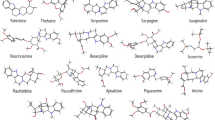Abstract
Medicinal plants contain special chemical compounds in their leaves, stems, and roots and were used thousands of years ago for the purpose of some therapeutic uses. Medicinal plants serve as a huge reservoir for a large variety of bioactive compounds, which considered of very high value as pharmaceutical products. Many plants produce very important pharmaceutical compounds known as alkaloids. Alkaloids usually produced by variety of plants showing a great potential to be purified in relatively large quantities using new advanced techniques in the area of plant biotechnology. Alkaloids are chemical compounds that are characterized by having nitrogen atom in their structures. They are large group of chemicals divided into several categories, such as true alkaloids, protoalkaloid, polyamine alkaloids, peptide and cyclopeptide alkaloids, and pseudoalkaloids.
One of the main challenges in the area of alkaloid investigation is how to be produced on the commercial scale and their characterization to be used as very useful therapeutic and pharmaceutical compounds. In order to achieve this, researchers turned to concentrate on the role of new biotechnology methods for synthesizing and characterizing of pharmaceutically important alkaloids. The great development that has happened in recent years in the field of biotechnology and molecular biology made it easy and convenient for transferring and propagating genes in plant cells for the purpose of commercially produce alkaloid related drugs. Number of techniques were developed and proved to be very useful and practical in synthesizing pharmaceutical alkaloids from plants. This chapter provides very important information about pharmaceutical alkaloids and discusses the importance of alkaloids as pharmaceutical and the role of new biotechnology approaches in synthesizing and producing alkaloids in commercial and industrial scale. This chapter is also discussed the new advanced techniques of plant biotechnology, including tissue culture of plant cell, genetic transformation, metabolic engineering, and microbial synthesis of alkaloids.
Access this chapter
Tax calculation will be finalised at checkout
Purchases are for personal use only
Similar content being viewed by others
References
Ahmad S, Garg M, Tamboli ET, Abdin MZ, Ansari SH (2013) In vitro production of alkaloids: factors, approaches, challenges and prospects. Pharmacogn Rev 7(13):27–33
Aniszewski T (2007) Alkaloids—secrets of life. Alkaloids chemistry, biological significance application and ecological role. Elsevier, Amsterdam
Begley TP (2009) Encyclopedia of chemical biology. Wiley
Cushnie TP, Cushnie B, Lamb AJ (2014) Alkaloids: an overview of their antibacterial, antibiotic-enhancing and antivirulence activities. Int J Antimicrob Agents 44(5):377–386
Dewick PM (2002b) Medicinal natural products. A biosynthetic approach, 2nd edn. Wiley, New York, p 381
Diamond A, Desgagne-Penix I (2016) Metabolic engineering for the production of plant isoquinoline alkaloids. Plant Biotechnol J 14:1319–1328
Chemical Encyclopedia: alkaloids. http://www.xumuk.ru/encyklopedia/119.html
Facchinin PJ (2001) Alkaloid biosynthesis in plants: biochemistry, cell biology, molecular regulation, and metabolic engineering applications. Annu Rev Plant Physiol Plant Mol Biol 52:29–66
Fattorusso E, Taglialatela-Scafati O (2008) Modern alkaloids: structure, isolation, synthesis and biology. Wiley, Weinheim
Grinkevich NI, Safronich LN (1983) The chemical analysis of medicinal plants: Proc. allowance for pharmaceutical universities. M.P 131
Hesse M (2002d) Alkaloids: nature’s curse or blessing? Wiley, Weinheim, p 413
Hesse M (2002e) Alkaloids: nature’s curse or blessing? Wiley, Weinheim, p 204
Hesse M (2002f) Alkaloids: nature’s curse or blessing? Wiley, Weinheim, p 11
Hesse M (2002g) Alkaloids: nature’s curse or blessing? Wiley, Weinheim, p 12
Hesse M (2002h) Alkaloids: nature’s curse or blessing? Wiley, Weinheim, p 31
Jacobsen O (1882) Alkaloide. In: Ladenburg, Handwörterbuch der Chemie, vol 1. Eduard Trewendt, Breslau, pp 213–422
Kittakoop P, Mahidol C, Ruchirawat S (2014) Alkaloids as important scaffolds in therapeutic drugs for the treatments of cancer, tuberculosis, and smoking cessation. Curr Top Med Chem 14(2):239–252
Larkin PJ, Miller JA, Allen RS, Chitty JA, Gerlach WL, Frick S, Kutchan TM, Fist AJ (2007) Increasing morphinan alkaloid production by over-expressing codeinone reductase in transgenic Papaver somniferum. Plant Biotechnol J 5(1):26–37
Leonard E, Runguphan W, O’Connor S, Prather KJ (2009) Opportunities in metabolic engineering to facilitate scalable alkaloid production. Nat Chem Biol 5:292–300
Lewis RA (1998) Lewis’ dictionary of toxicology. CRC Press, Boca Raton, p 51
Luch A Molecular, clinical and environmental toxicology. Springer, Basel, p 20
Manske RHF (1965) The alkaloids. Chemistry and physiology, vol VIII. Academic, New York, p 673
Nakagawa A, Minami H, Kim J, Koyanagi T, Katayama T, Sato F, Kumagai H (2011) A bacterial platform for fermentative production of plant alkaloids. Nat Commun 2 Article number 326
Narcross L, Fossati E, Bourgeois L, Dueber JE, Martin VJJ (2016) Microbial factories for the production of benzylisoquinoline alkaloids. Trends Biotechnol 34 No. 3
Plemenkov VV (2001a) Introduction to the chemistry of natural compounds. Kazan, p 242
Plemenkov VV (2001b) Introduction to the chemistry of natural compounds. Kazan, p 246
Raymond SS, Jonathan SJ, Watkins-Pitchford JM (2010) The essence of analgesia and analgesics. Cambridge University Press, Cambridge, pp 82–90
Russo P, Frustaci A, Del BA, Fini M, Cesario A (2013) Multitarget drugs of plants origin acting on Alzheimer’s disease. Curr Med Chem 20(13):1686–1693
Sato F, Kumagai H (2013) Microbial production of isoquinoline alkaloids as plant secondary metabolites based on metabolic engineering research. Proc Jpn Acad Ser B Phys Biol Sci 89(5):165–182
Sihasar B, Rahimi M, Tavassoli A, Raissi A (2011) Application of biotechnology in production of medicinal plants. American-Eurasian J Agric Environ Sci 11(3):439–444
Smita S, Ashok KS (2013) Biotechnology and genetic engineering for alkaloid production. In: Natural products. Springer, Berlin
Verpoorte R, Contin A, Memelink J (2002) Biotechnology for the production of plant secondary metabolites. Phytochem Rev:13–25
Yang YT, Bennet GN, San KY (1998) Genetic and metabolic engineering. Electron J Biotechnol 1(3)
Author information
Authors and Affiliations
Corresponding author
Editor information
Editors and Affiliations
Rights and permissions
Copyright information
© 2017 Springer International Publishing AG
About this chapter
Cite this chapter
Khalil, A. (2017). Role of Biotechnology in Alkaloids Production. In: Naeem, M., Aftab, T., Khan, M. (eds) Catharanthus roseus. Springer, Cham. https://doi.org/10.1007/978-3-319-51620-2_4
Download citation
DOI: https://doi.org/10.1007/978-3-319-51620-2_4
Published:
Publisher Name: Springer, Cham
Print ISBN: 978-3-319-51619-6
Online ISBN: 978-3-319-51620-2
eBook Packages: Biomedical and Life SciencesBiomedical and Life Sciences (R0)




